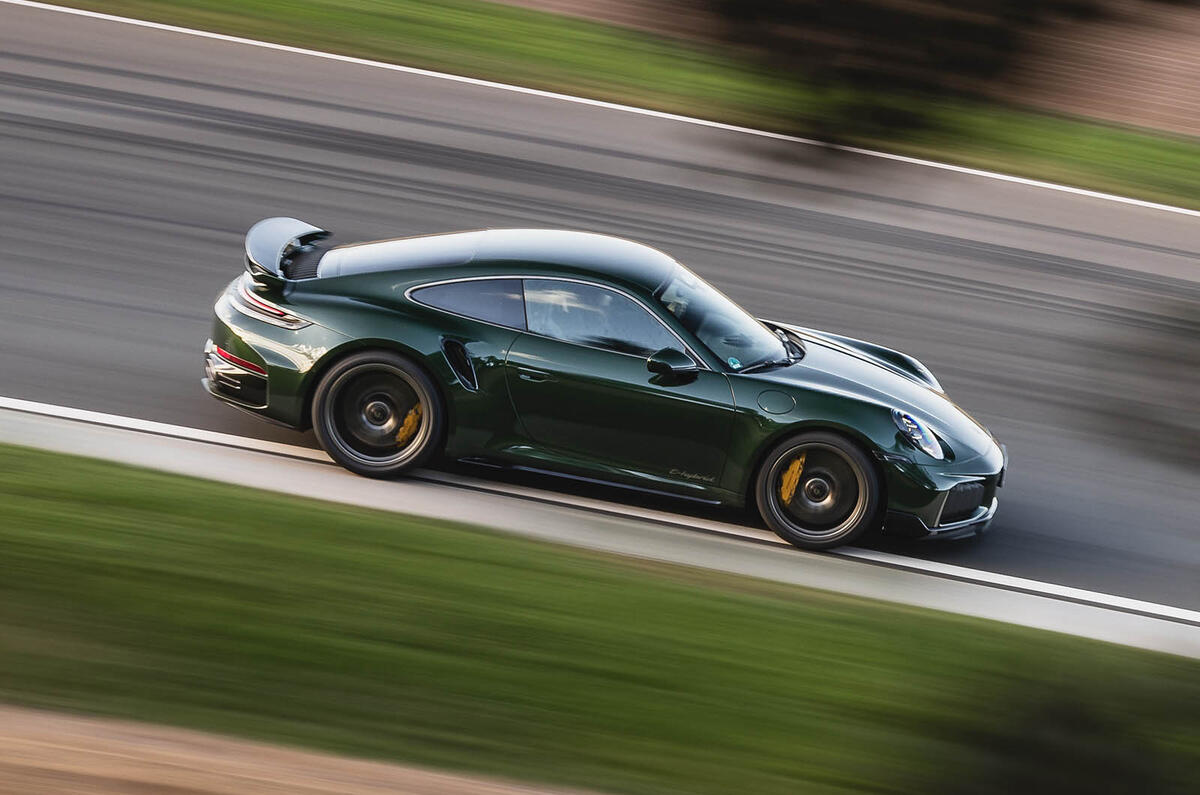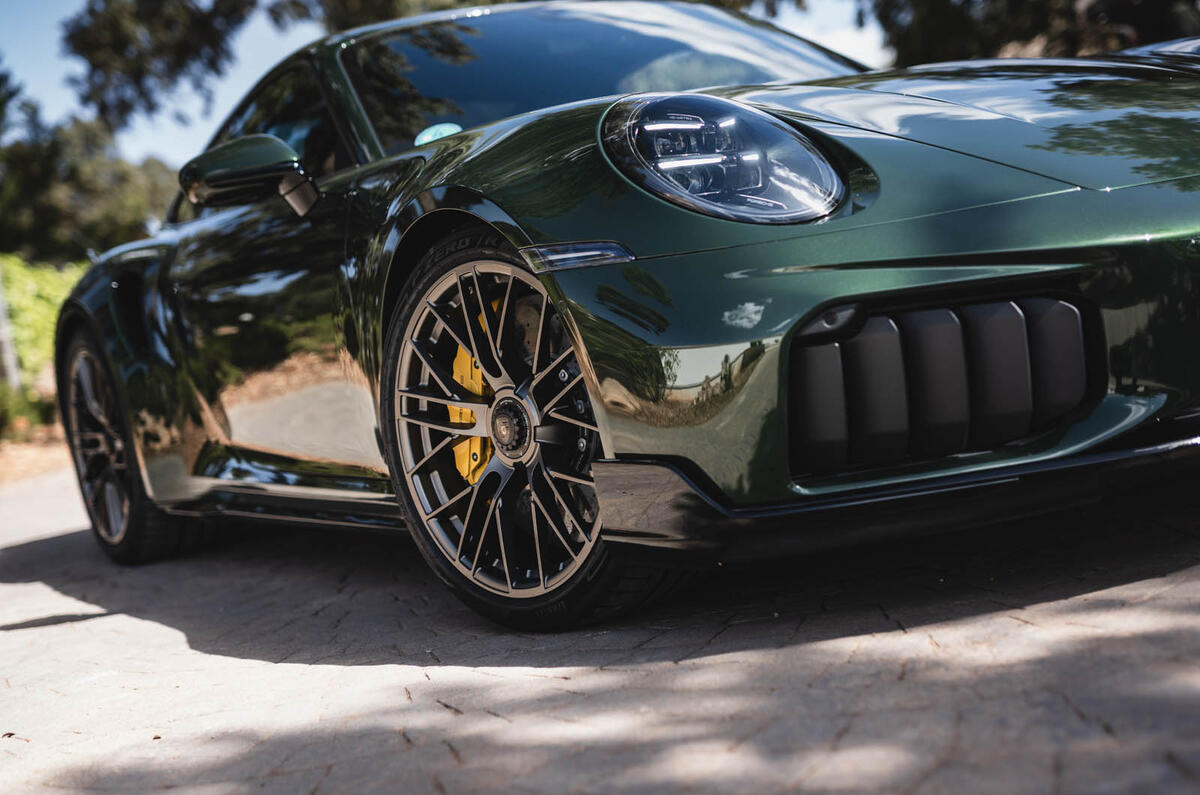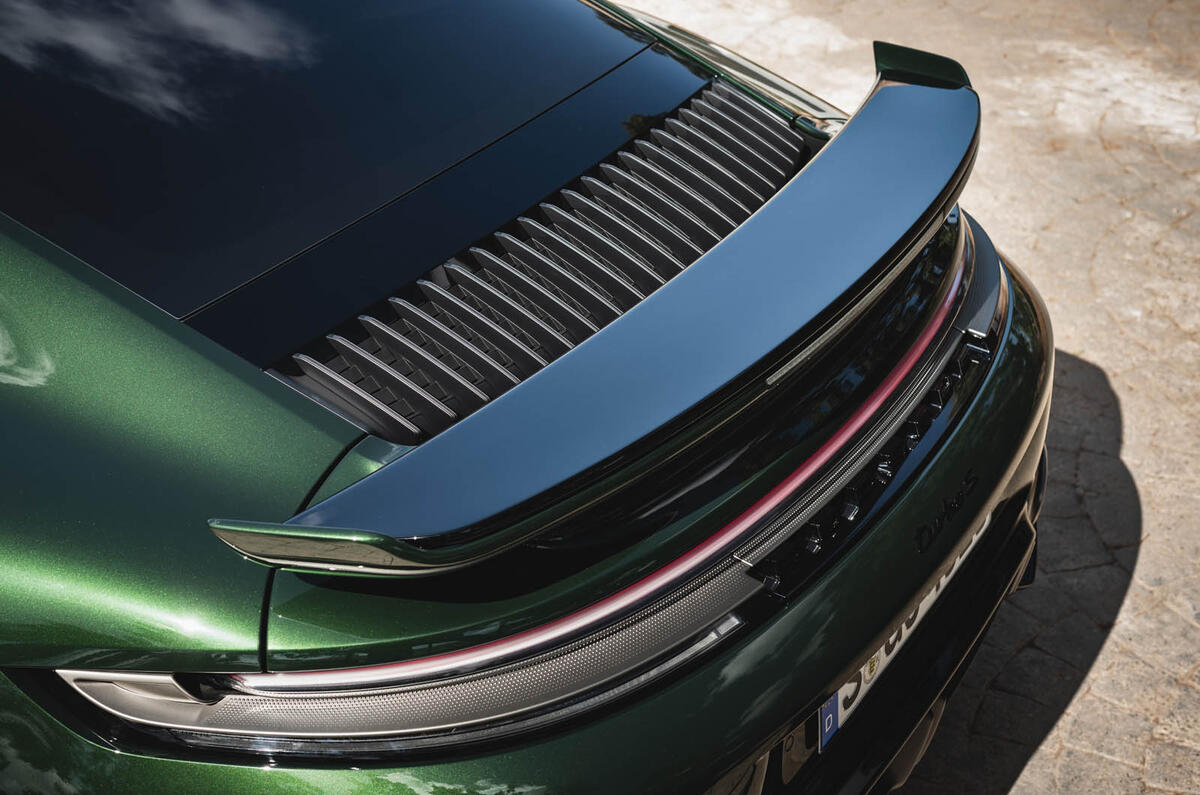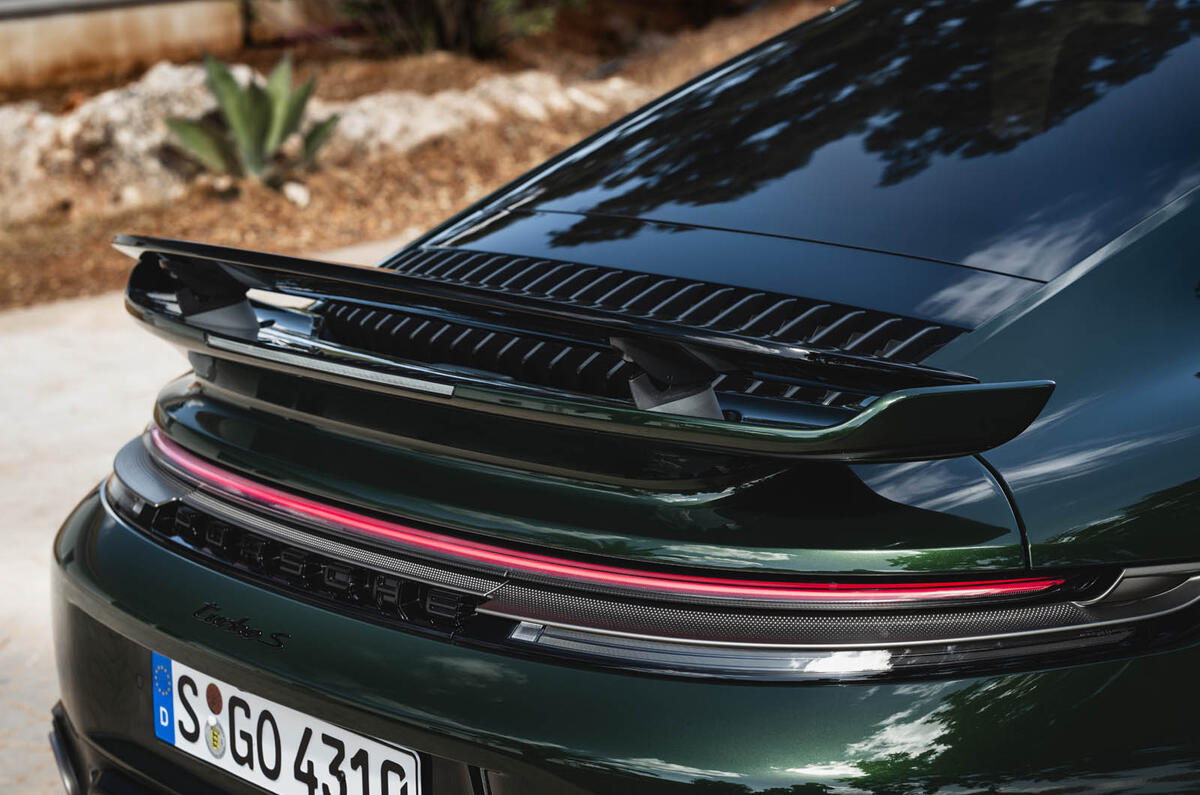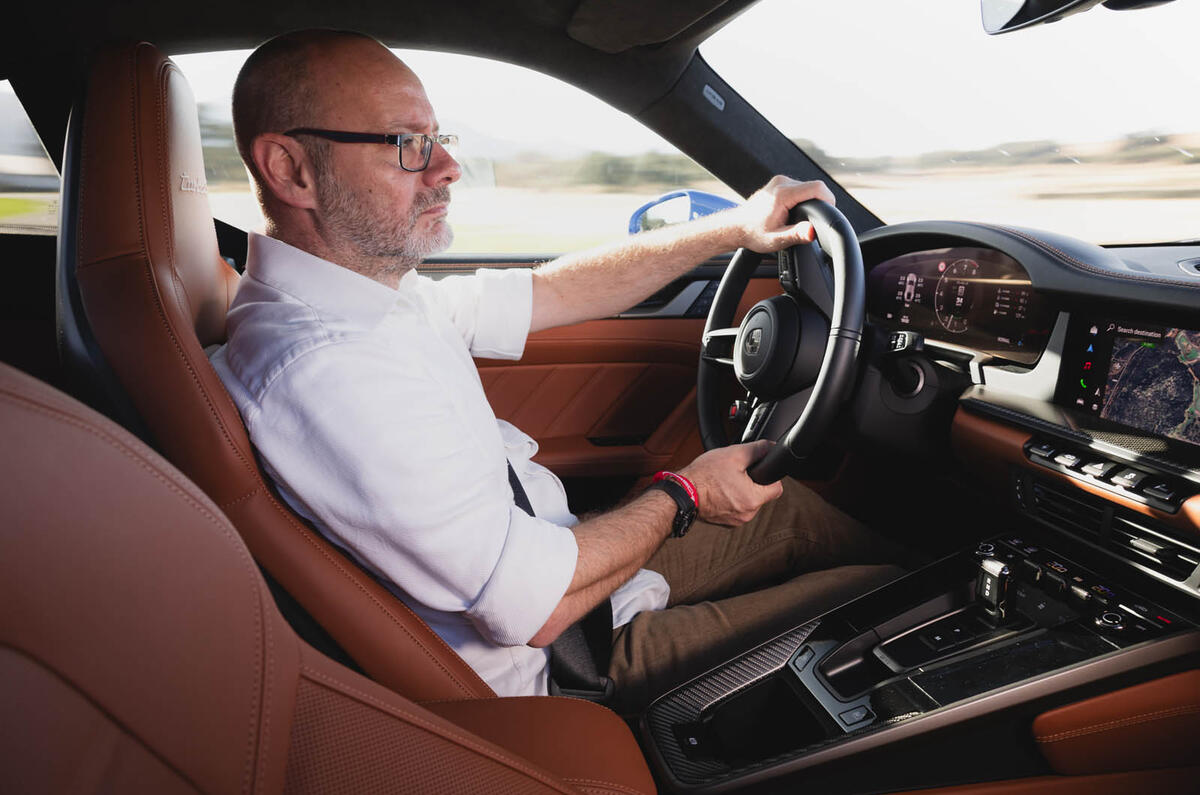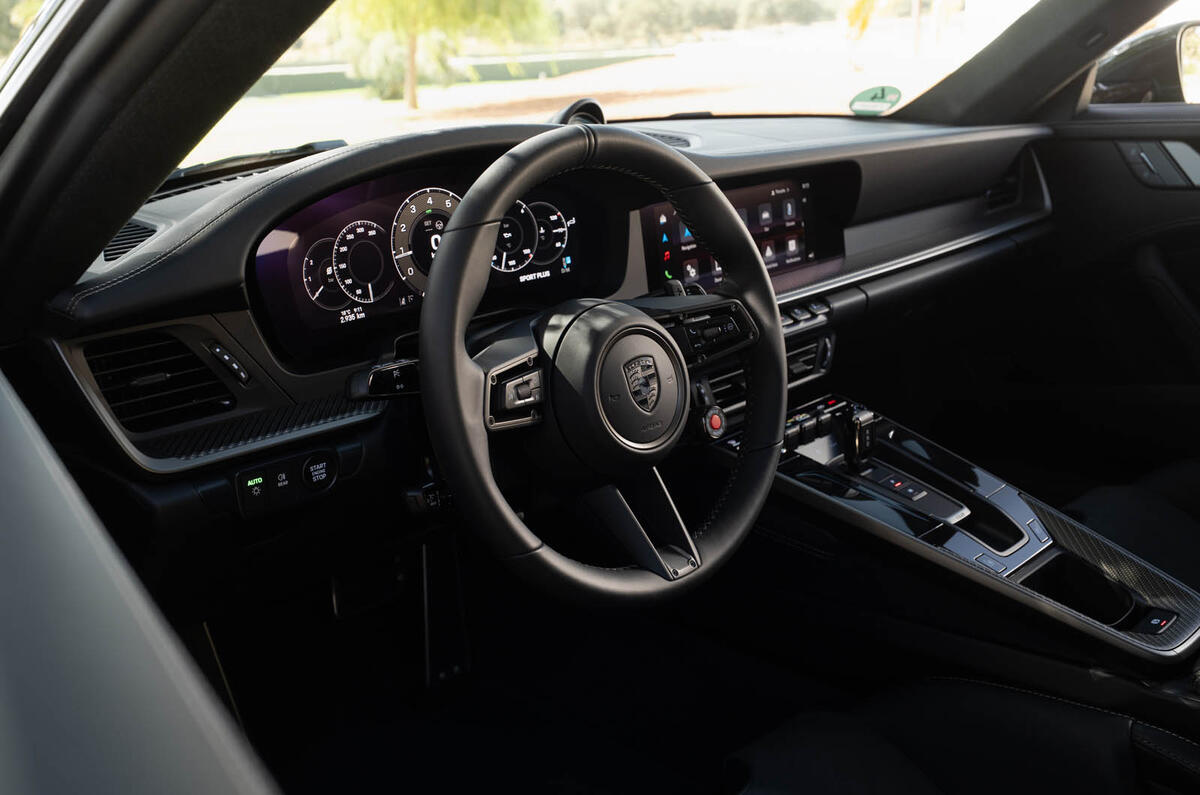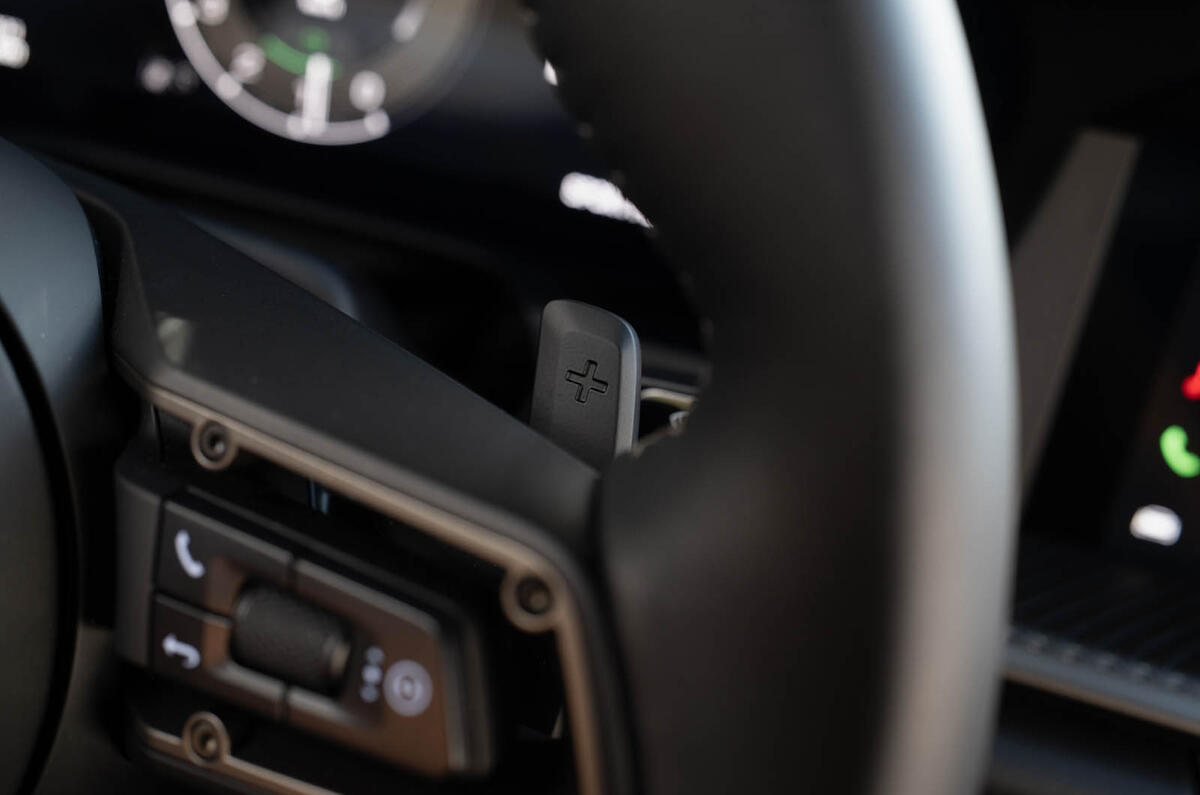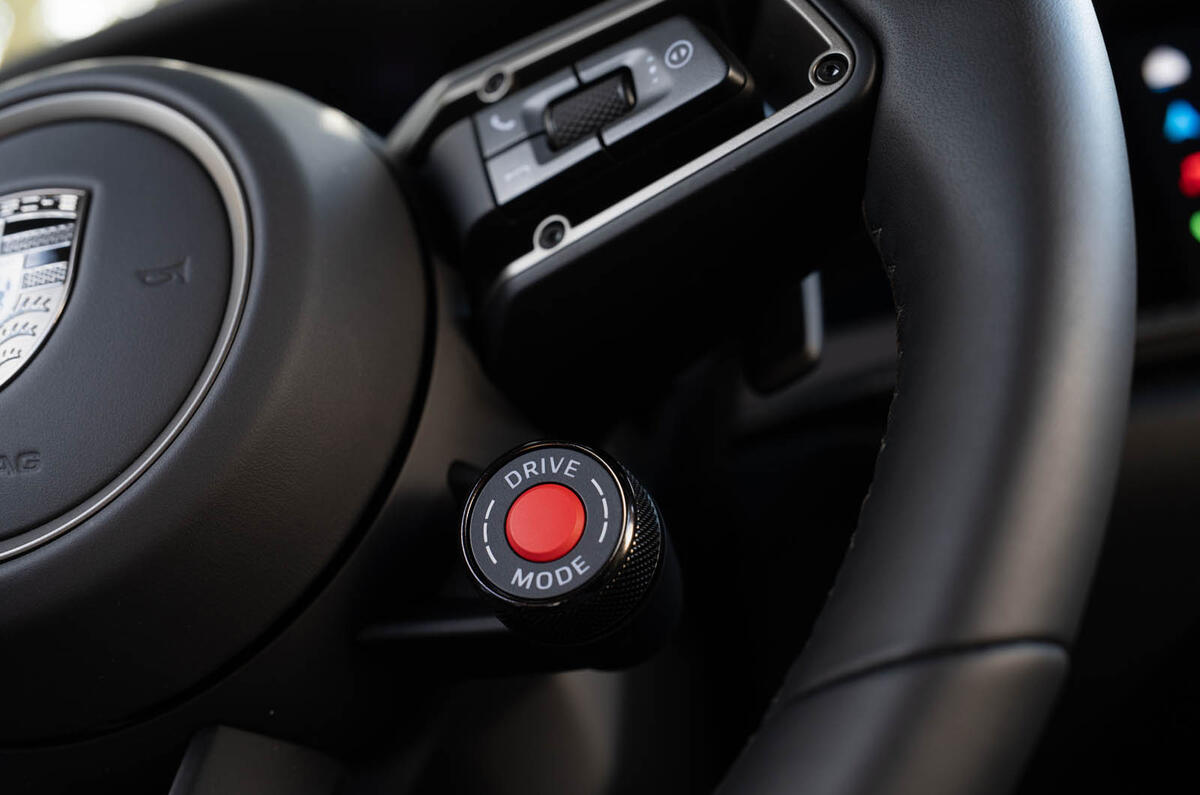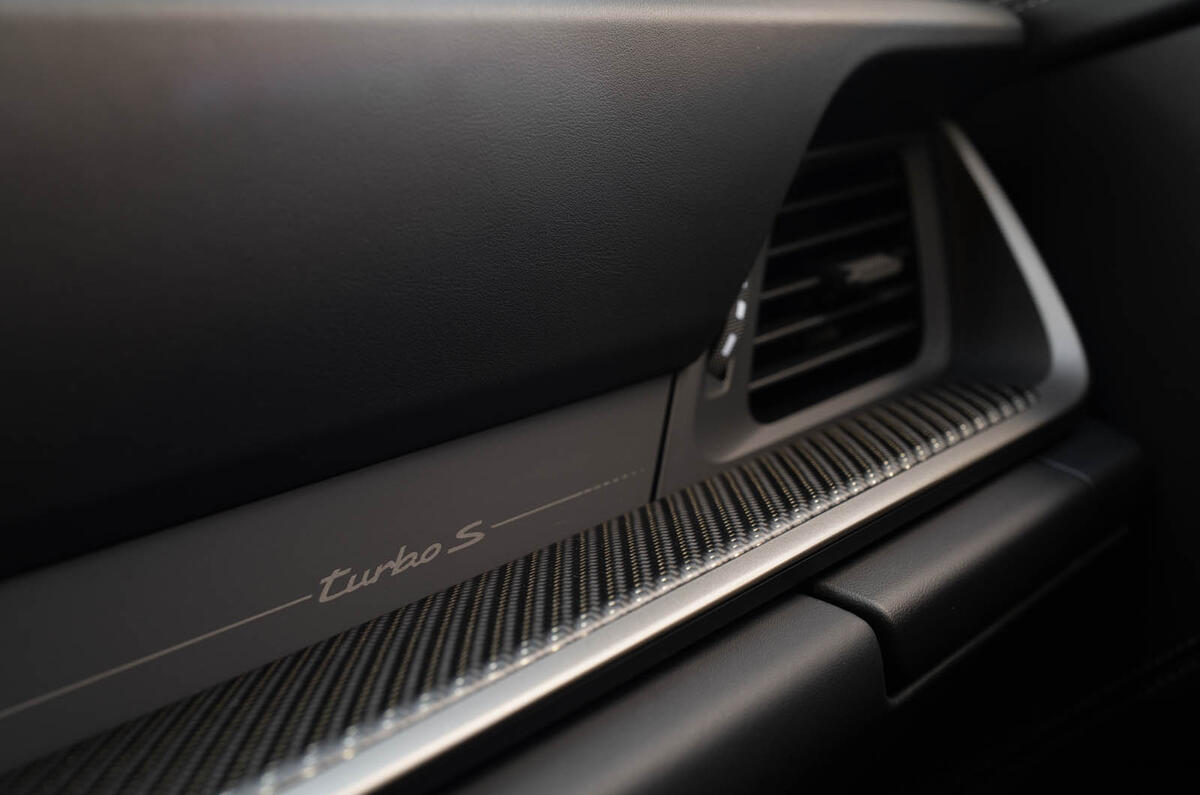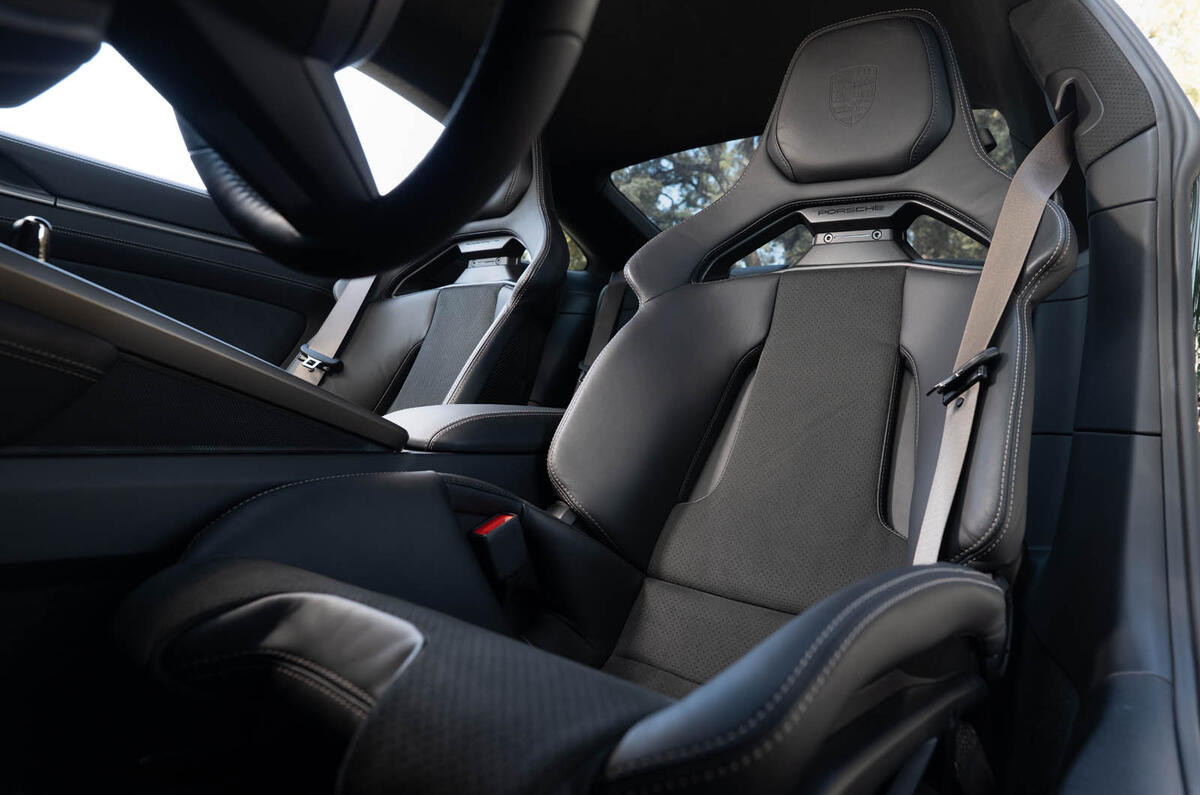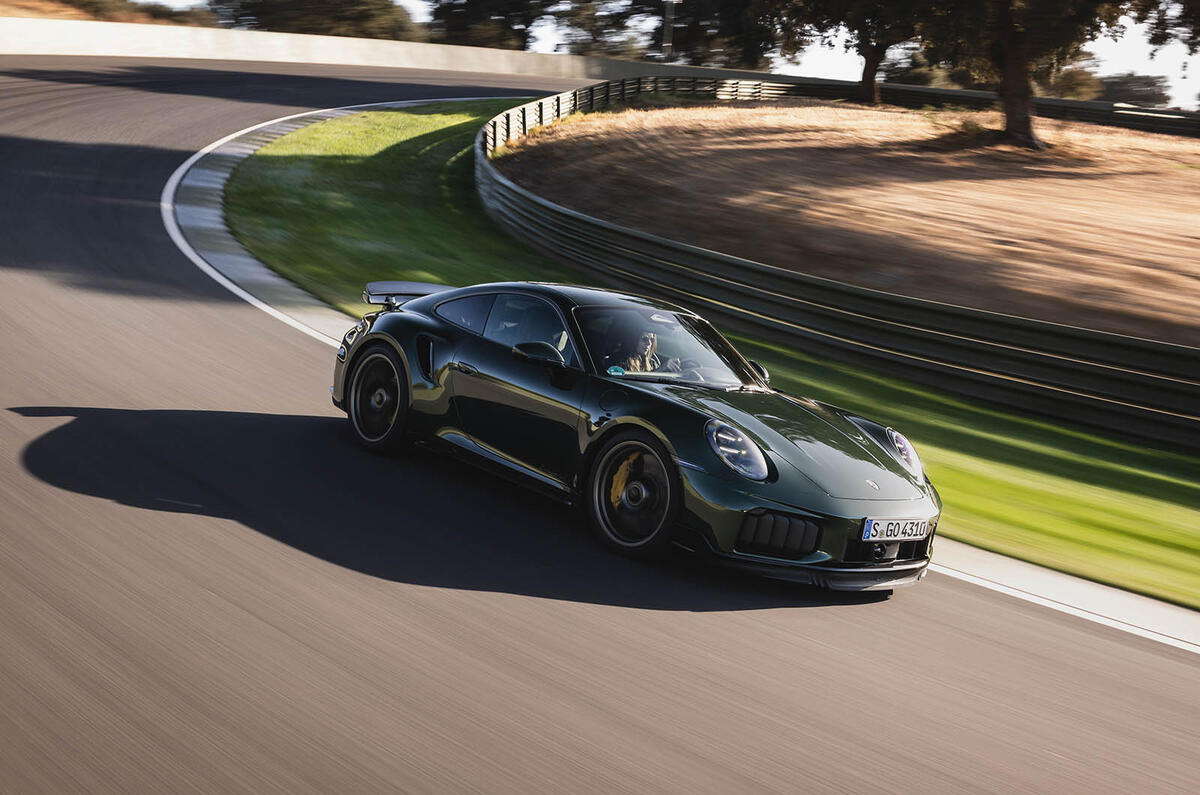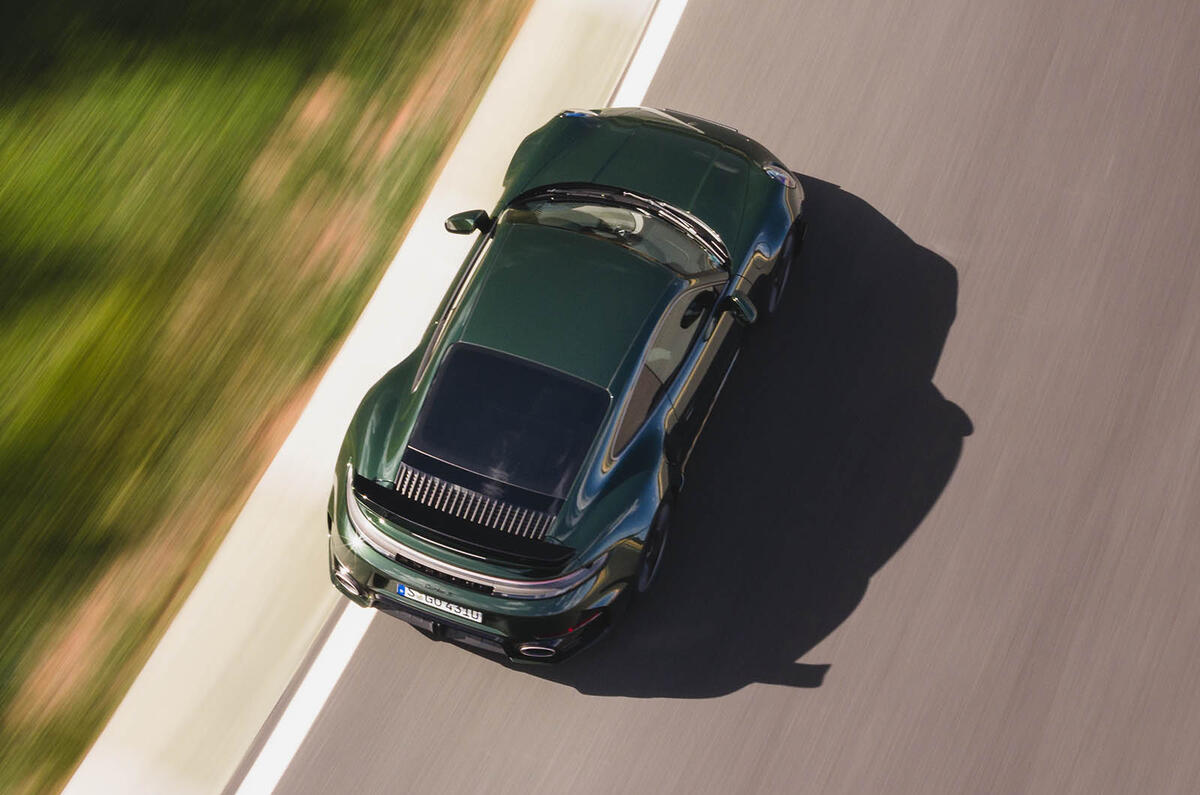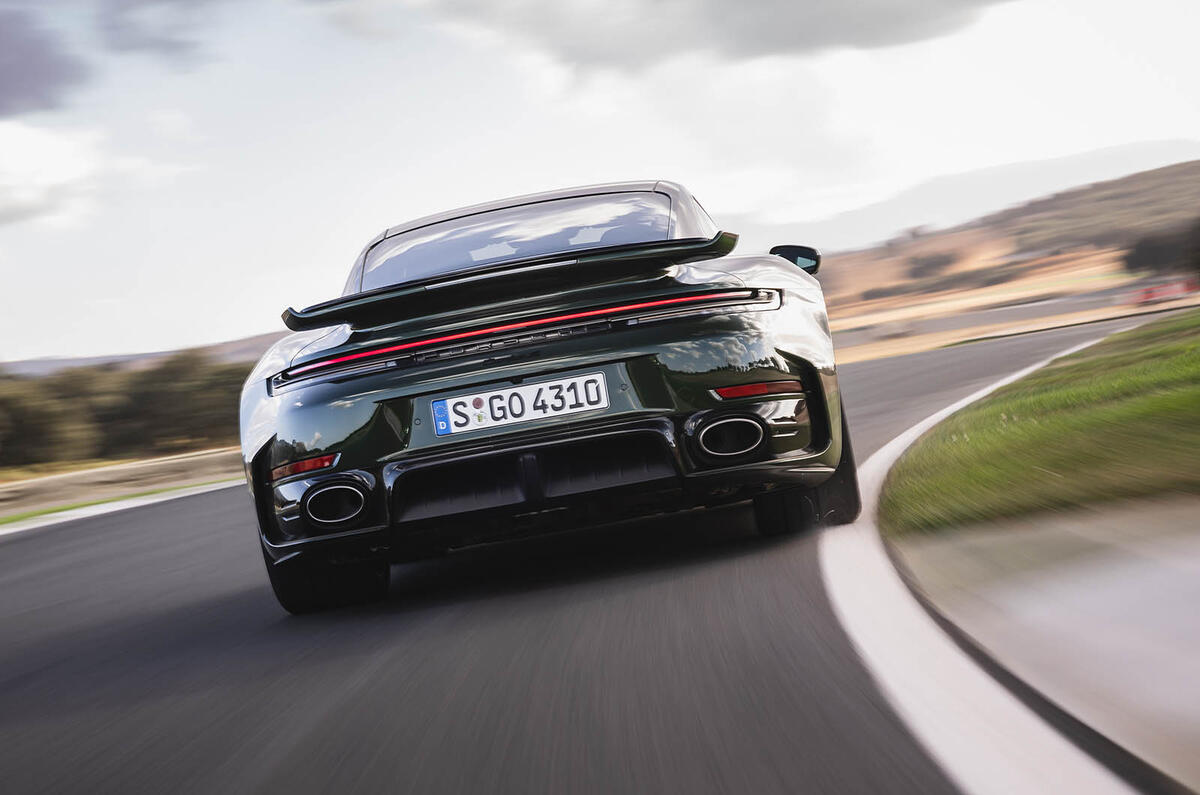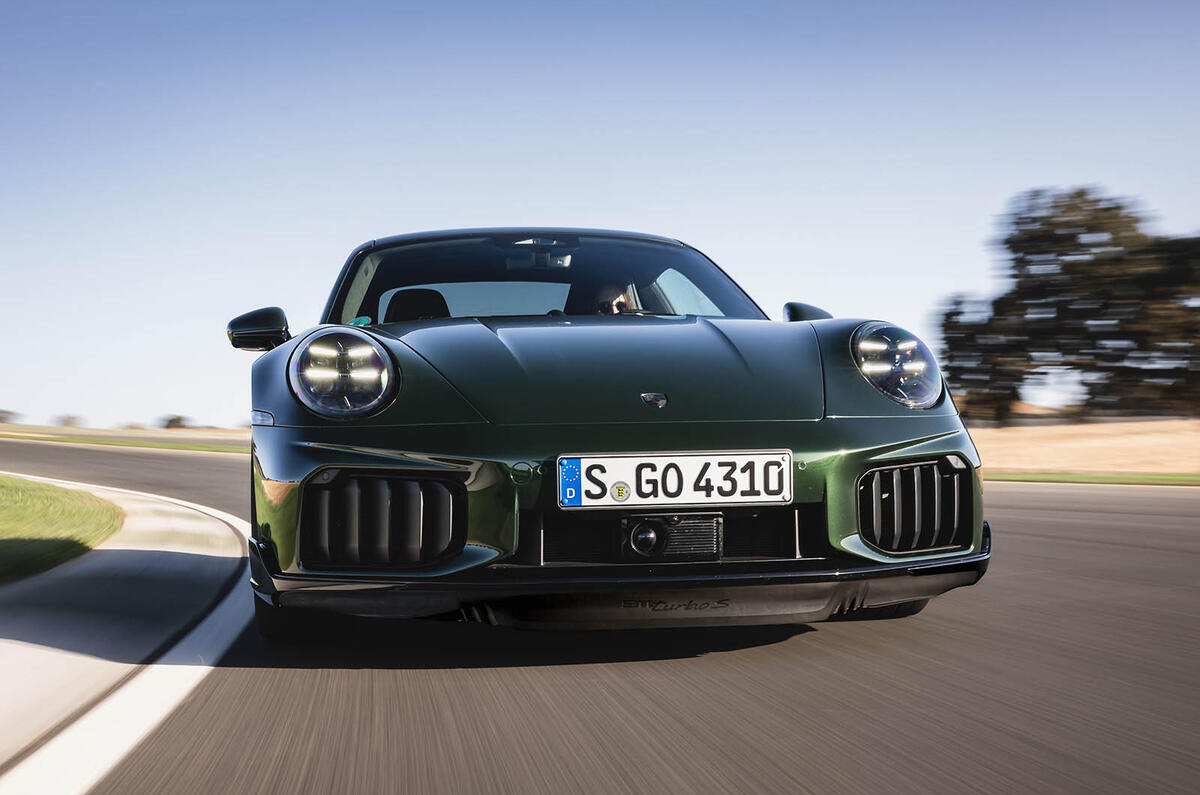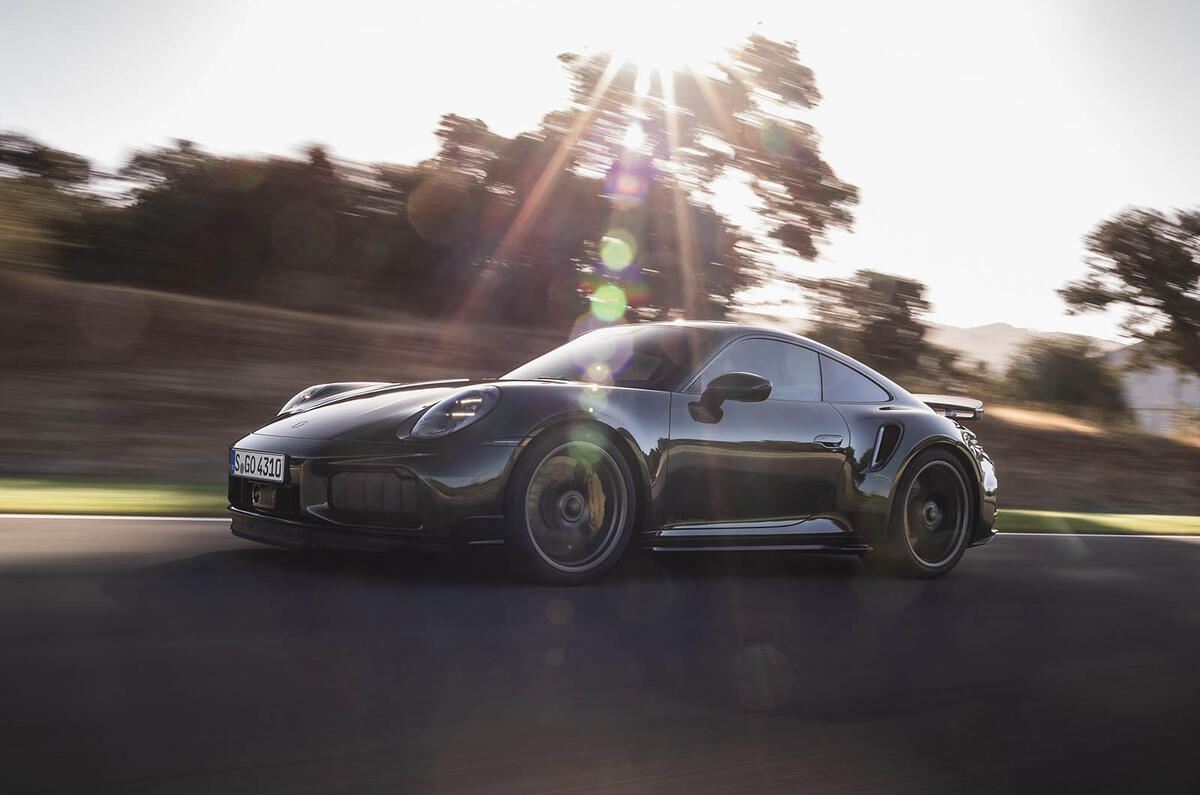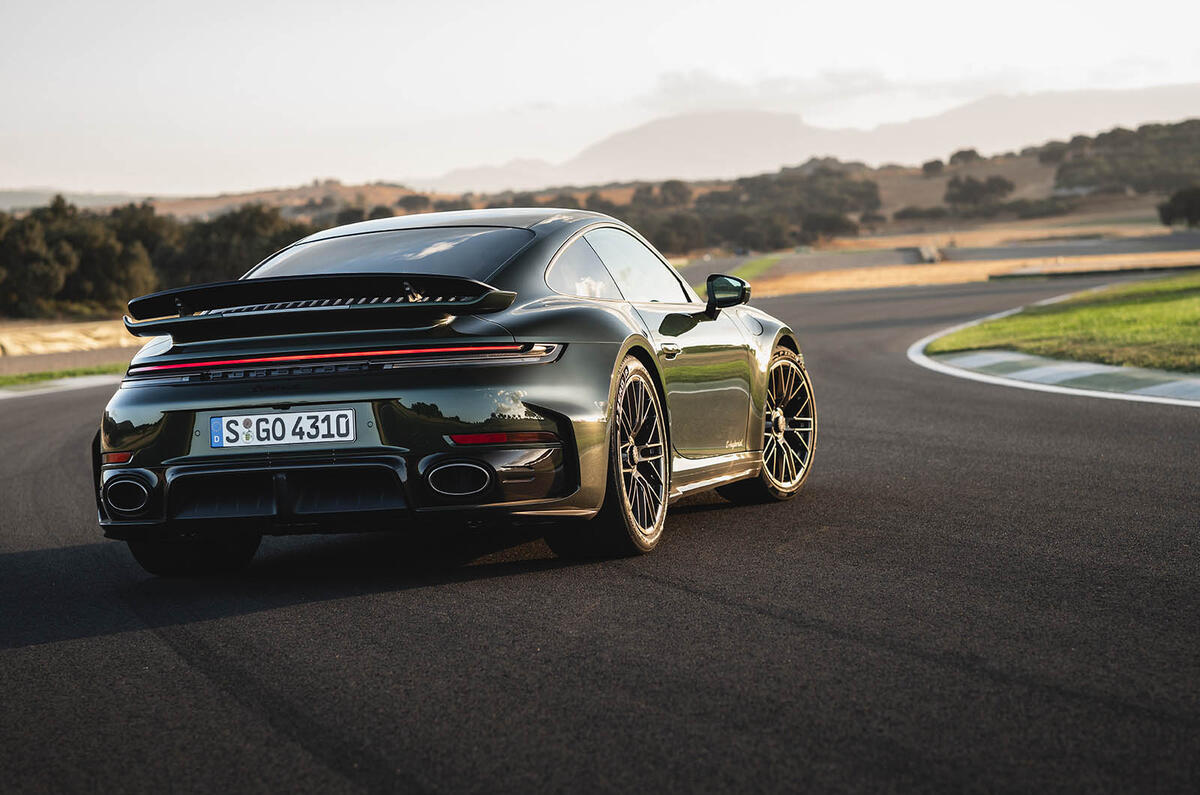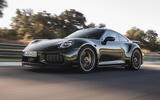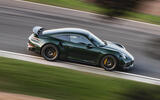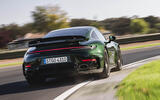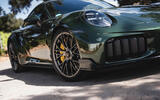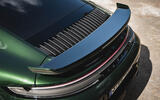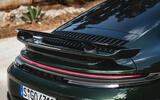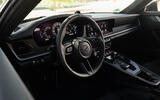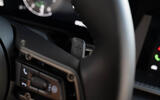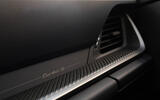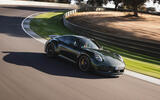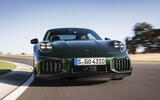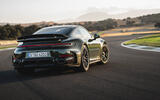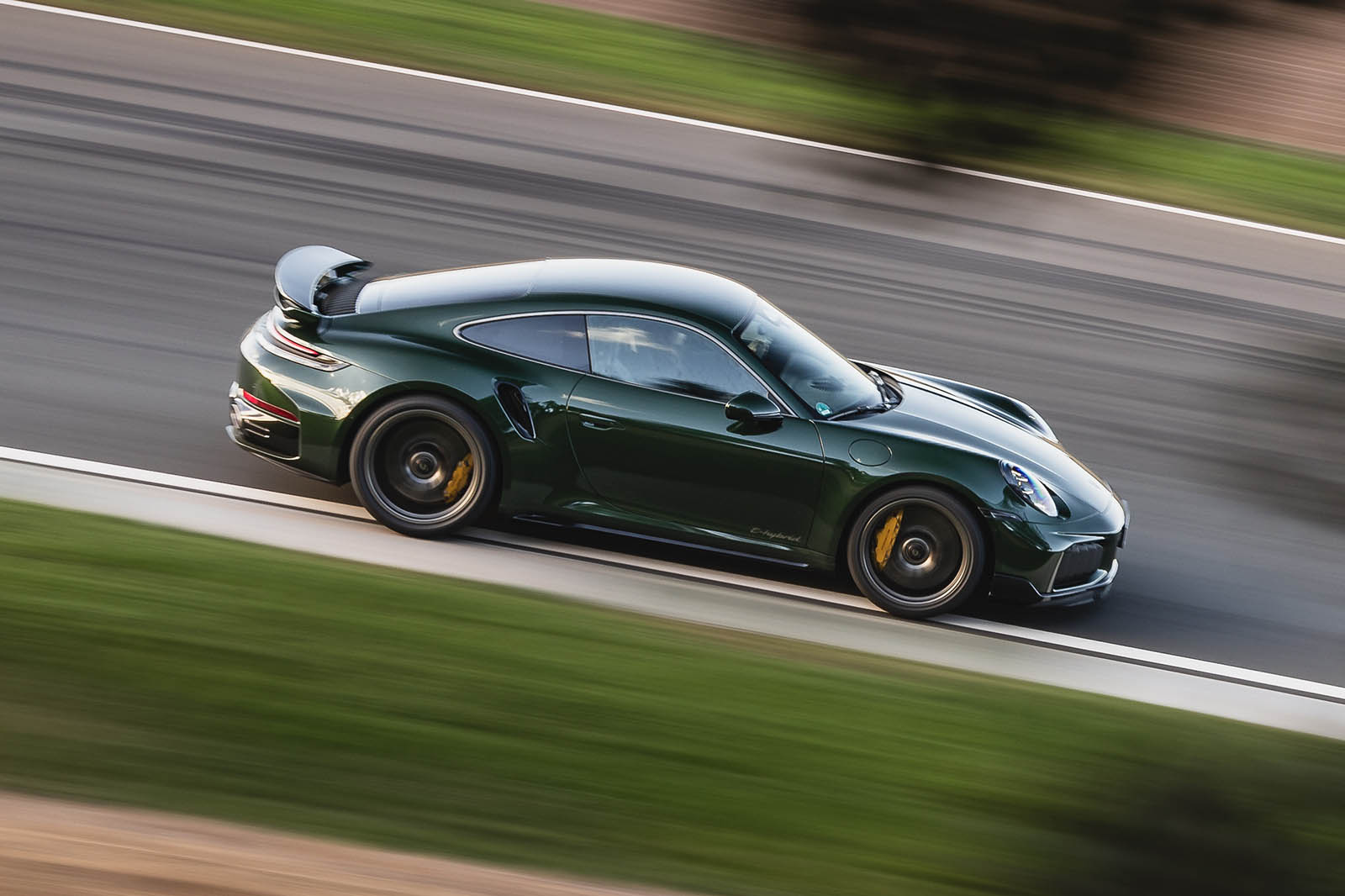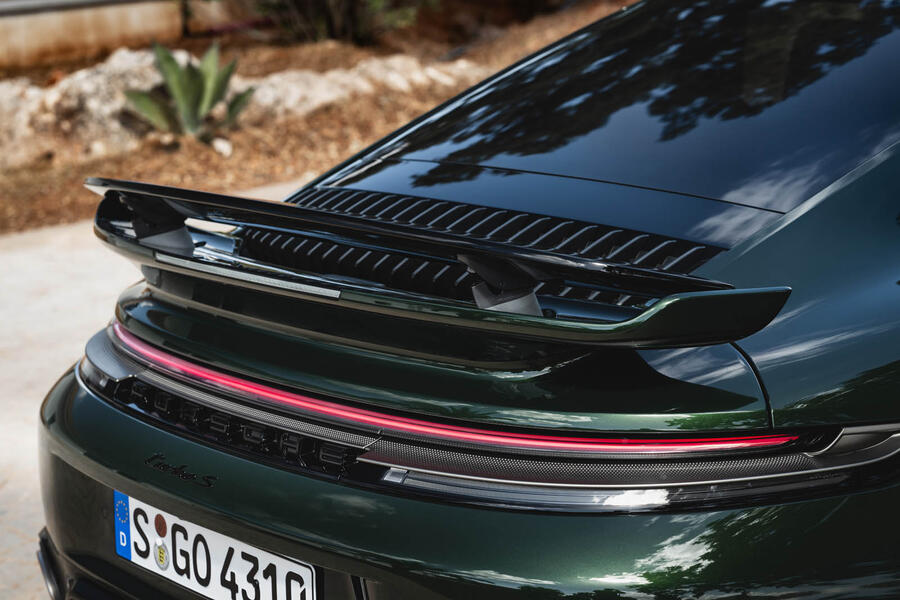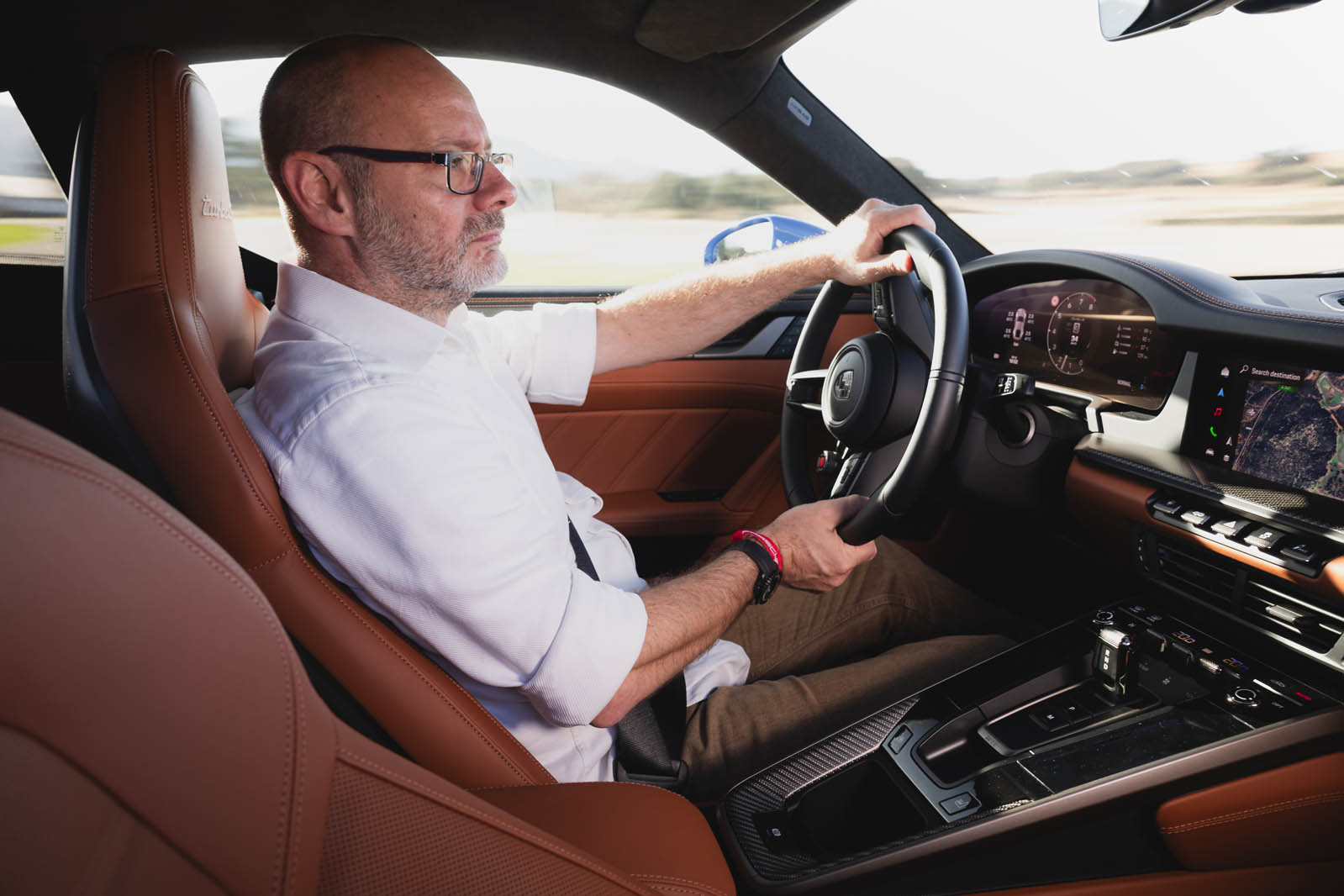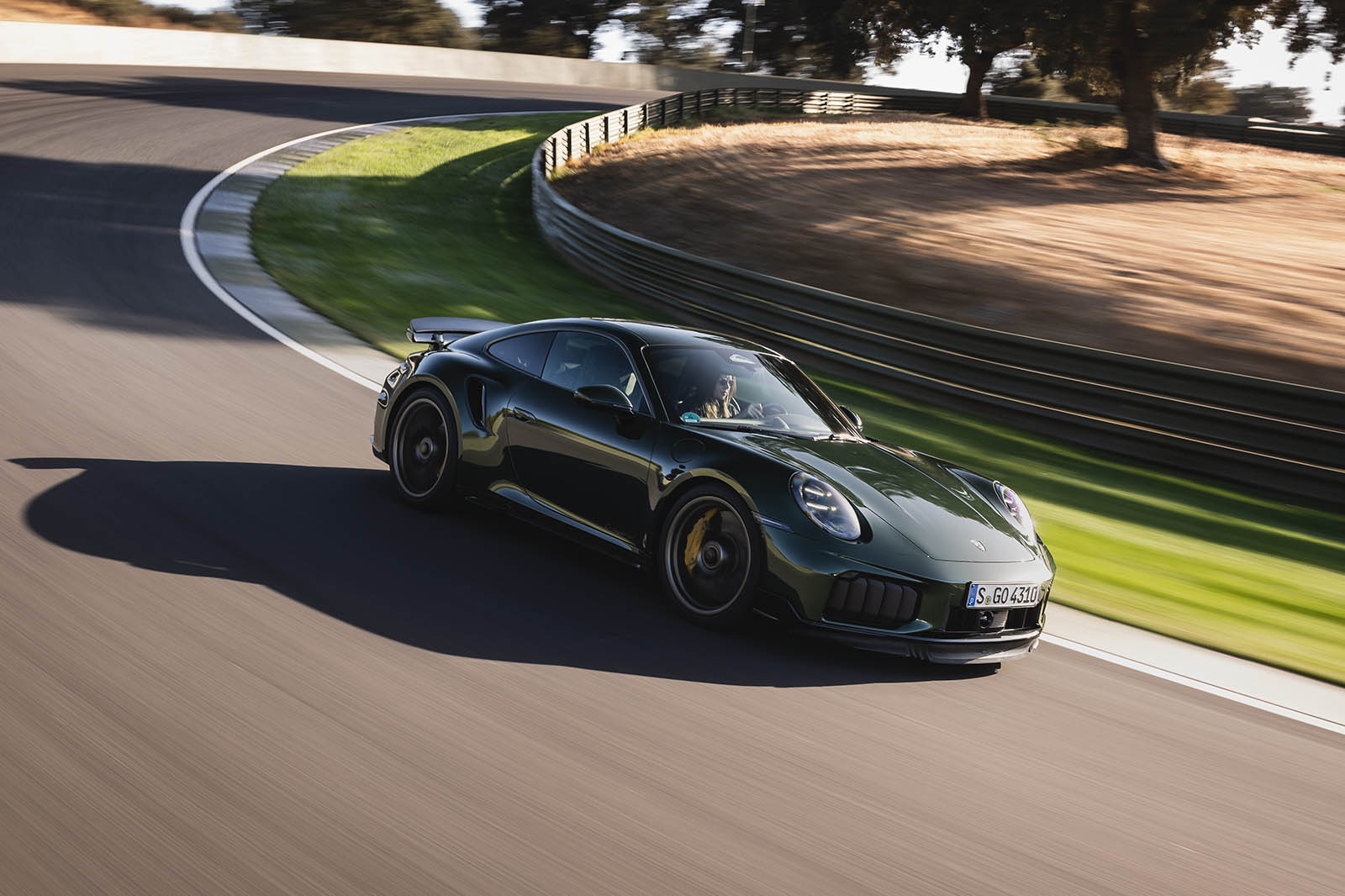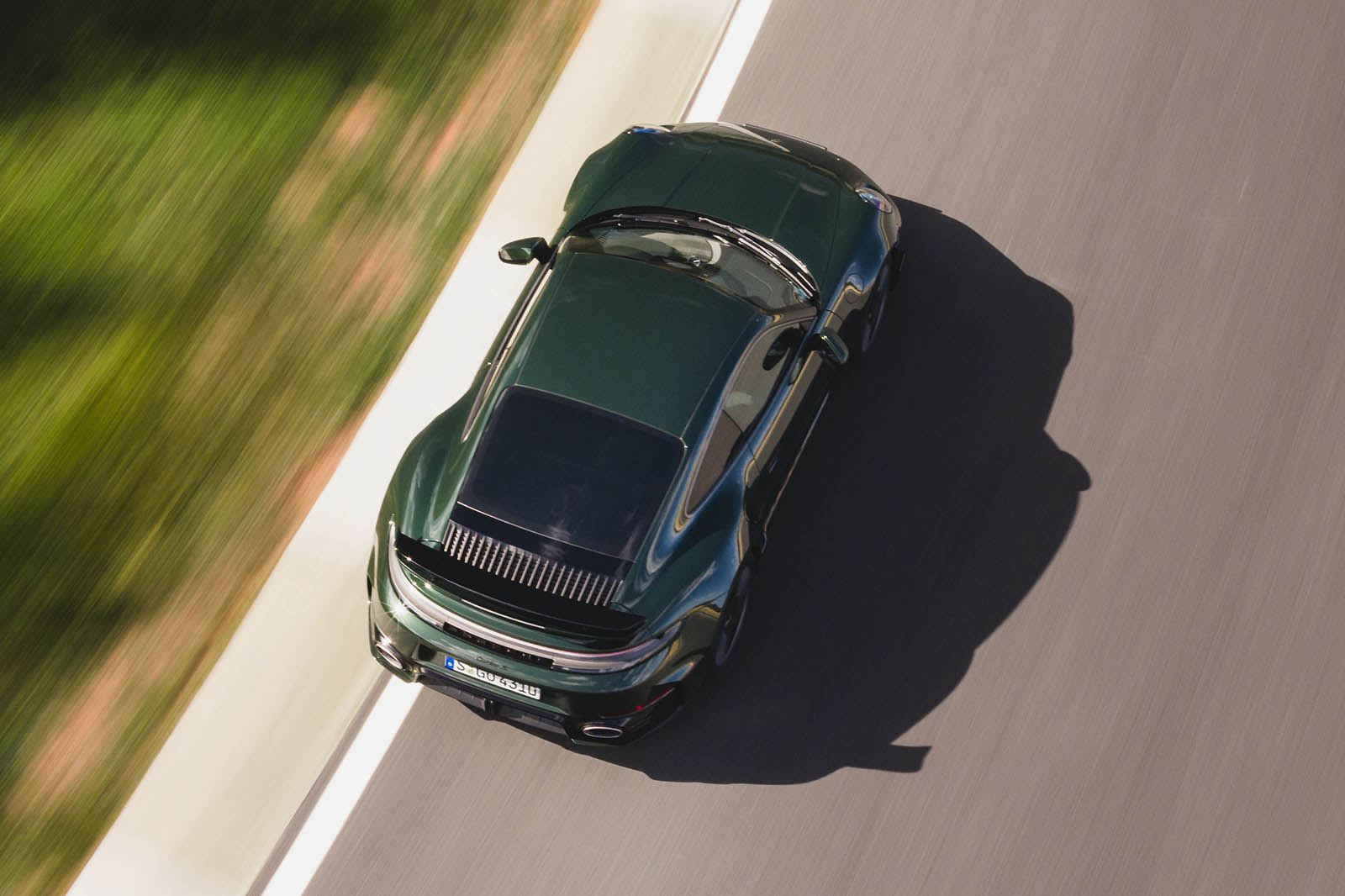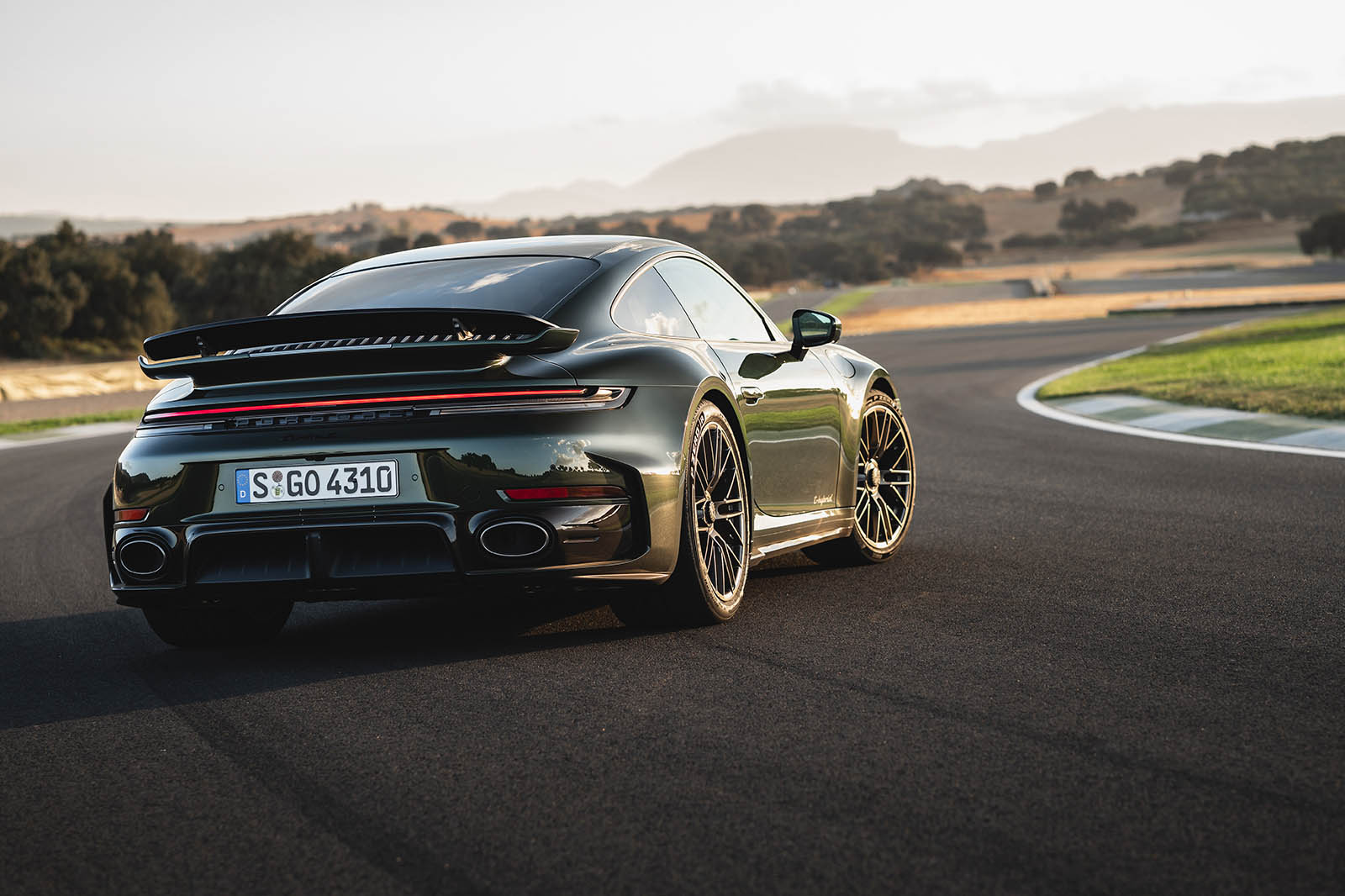Suspension is by MacPherson struts at the front and a multi-link arrangement at the rear, with adaptive dampers and, more significantly, active anti-roll bars. These are driven off the 400V system, which makes them much more responsive. Likewise the rear-wheel steering.
If all of this sounds complicated, I think you’re right, but Porsche is better at tuning complex dynamic systems better than perhaps anyone bar Ferrari, which has a smaller operating breadth anyway.
If it also sounds a little heavy, again you’re correct. The Turbo S weighs 85kg more than before, at 1725kg, and this is now measured without the rear seats (now a no-cost option), which would add another few.
It’s just inevitable with all of the additional hybrid hardware, which accounts for about 65kg of the gain, with bigger brakes (420mm and 410mm carbon-ceramics front and rear respectively), wider rear wheels (with 10mm-wider, 325-section rear tyres) than before to cope with the additional power, plus the body now has to be around 10kg heavier after some strengthening to meet latest legislation.
Frank Moser, vice-president of Porsche’s 911 and 718 model lines, tells me that I won’t feel the weight gain – and I think he’s mostly right.
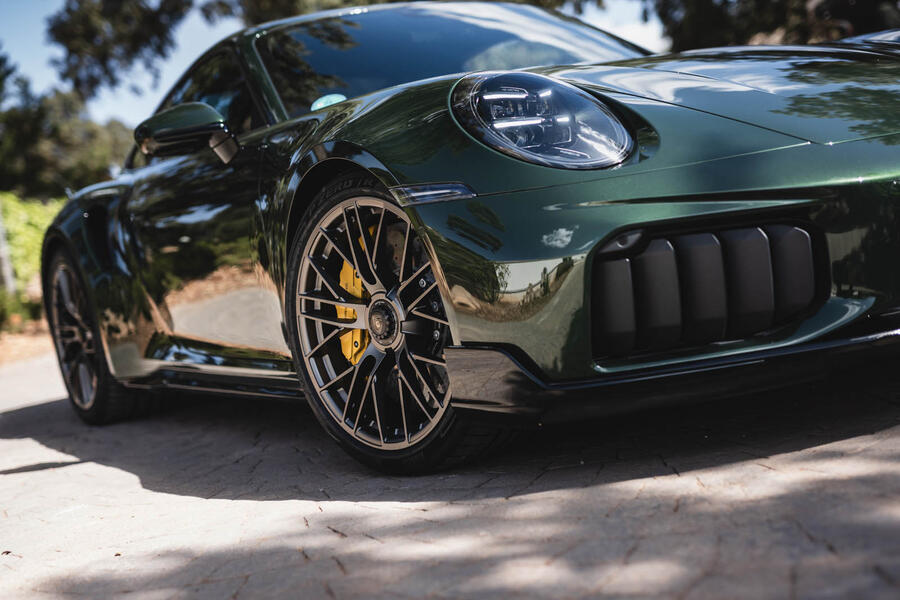
My drive comes in a coupé on relatively good Spanish roads to the Ascari race circuit. And on these it’s really precise, very responsive for overtakes, as you would expect, with medium-weighted and geared but incredibly accurate steering, and it feels impeccably well-tuned.




